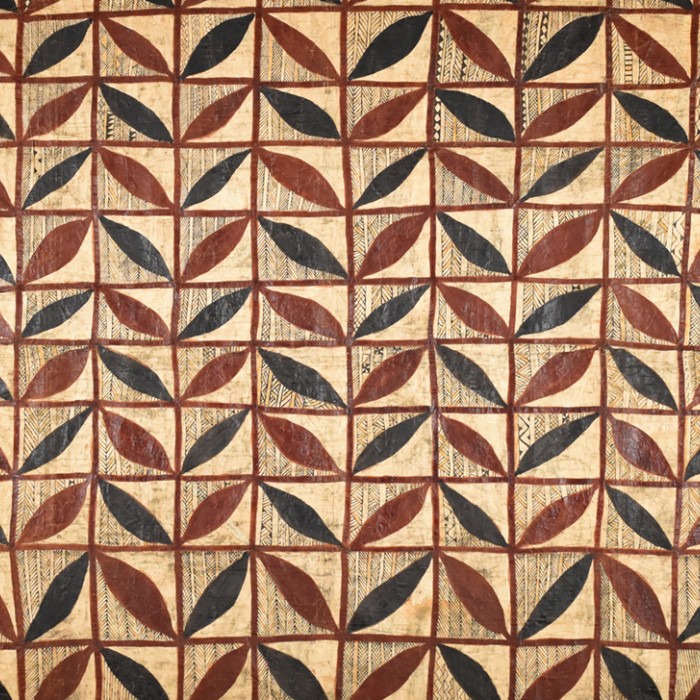
What Are Tapa and Woven Mats?
Faitau itulau ile gagana Samoa
Not only does koloa (cultural materials used to fulfill customs and traditions) hold important symbols that tell our stories, but there are ever evolving relationships and koloa allows us to honor one another outside of the cash economy with our treasured pieces. Like many Moana Nui nations and our moana, it is our pathway to and from one another.
—Asena Taione-Filihia (Tongan) and Lolofi Soakai (Tongan)
There are over 450 tapa and woven mats at the Museum, and a major goal of The Fabric of Community is to make them accessible. We have a responsibility to continually learn from our Pacific Islander partners, as well as to provide a platform for community members to share their knowledge and rich cultural traditions. We would like our collection to encourage discussion, connection, and ingenuity, and to allow us to create reciprocal relationships with the communities we serve. This slideshow shows a selection of tapa and finely woven mats from each Pacific Island region represented in the collection. You can access the full database here.
Watch this video to find out more about the history of the collection.
There is more to any collection than the objects within it. Each item has its own history, which includes not just its creation but also who collected it, their background, and how it arrived at the museum. The more we understand and share this history, and the more we involve the communities whose cultural material is housed at NHMLAC, the more complex and complete everyone's knowledge becomes.
The majority of the tapa and woven mats at NHMLAC were bartered, bought, or gifted. They were collected during an era filled with US military activity and resource extraction, and most collectors were involved in these activities as doctors, nurses, educators, or company employees. Others were often wealthy individuals who could afford to travel to the region for pleasure. What follows is a list of those who contributed the bulk of the collection.
The Natural History Museums of Los Angeles County wish to thank the following community members for their support with this project: Audrey Alo, Cindi Alvitre, Juliann Anesi, Katrina Talei Igglesden, Fran Lujan, Kirisitina Sailiata, Tavae Samuelu, Kelani Silk, Lolofi Soakai, Asena Taione-Filihia, and Craig Torres. The Fabric of Community has been made possible in part by a major grant from the National Endowment for the Humanities (NEH): Democracy demands wisdom. Any views, findings, conclusions, or recommendations expressed in this exhibition do not necessarily represent those of the NEH.